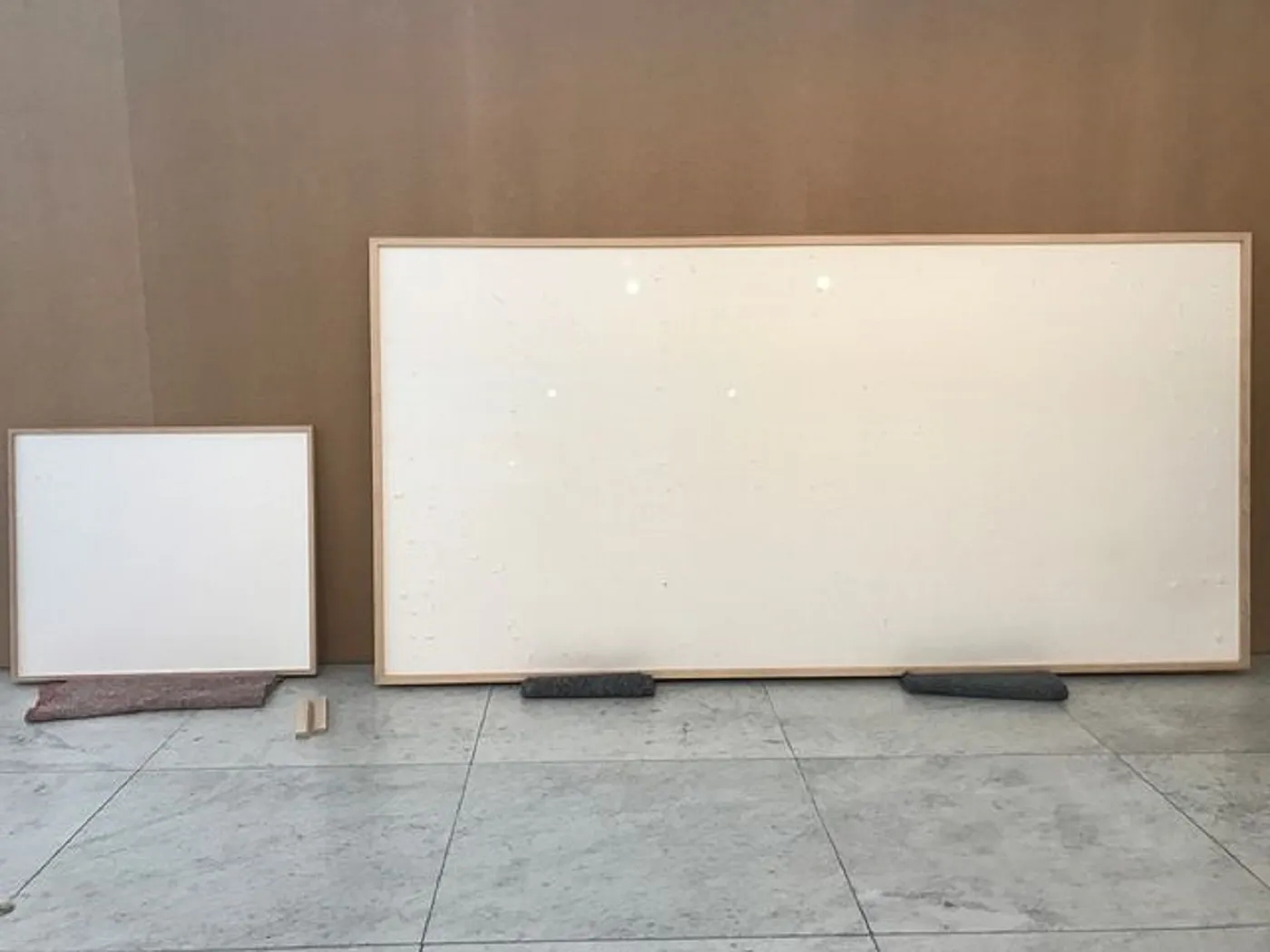Danish Artist Ordered To Repay Museum $75,000 After Turning In Blank Canvasses
A Danish artist ordered to repay museum $75,000 after turning in blank canvasses. This has stirred discussions about the boundaries of contemporary art and the expectations placed upon artists. Based on the sources provided, let's delve into the details of this unique situation.
Author:Raven NoirReviewer:Morgan MaverickSep 25, 20236.2K Shares146.2K Views

A Danish artist ordered to repay museum $75,000 after turning in blank canvasses. This has stirred discussions about the boundaries of contemporary art and the expectations placed upon artists. Based on the sources provided, let's delve into the details of this unique situation.
Danish conceptual artist Jens Haaning received 532,000 kroner ($75,000 at today's exchange rate) for his work in 2021 but returned two empty frames bearing the title "Take the Money and Run."
Several media outlets reported that the artist has now been ordered by a court in Copenhagen to repay the money to the museum that paid for the piece of artwork. The amount was equal to the amount the museum had given him less the artist's fee and the mounting expenses.
Haaning said:
“„I am shocked, but at the same time, it is exactly what I have imagined. It has been good for my work, but it also puts me in an unmanageable situation where I don't really know what to do.- Jens Haaning
Now, the Danish artist ordered to repay museum $75,000 after turning in blank canvasses. This decision reflects the legal perspective that the transaction constituted a breach of contract, despite the artist's artistic intent. It also raises questions about the responsibilities and obligations of artists in a commercial art market.
The Kunsten Museum of Modern Art in Aalborg, Denmark, paid Haaning about $75,000 in 2021 to recreate two of his well-known works, "An Average Danish Annual Income" and "An Average Austrian Annual Income," which featured krone and euro banknotes taped to a canvas and were intended to represent the average annual income of a person in these countries.
Instead, he sent two empty frames, which the museum displayed the following year. The art endeavor was meant to make a statement about wages in Austria and Denmark.
The artist said in 2021 that "Take the Money and Run" was motivated by what he perceived as inadequate payment; he claimed that in order to recreate the sculptures as intended, he would have needed to pay himself about 3,300 euros, or roughly $3,500 today.
He said:
“„I encourage other people who have working conditions as miserable as mine to do the same. If they're sitting in some shitty job and not getting paid and are actually being asked to pay money to go to work, then grab what you can and beat it- Jens Haaning
High-concept works that parody money have sparked debate in the art world before. In 2018, the English artist Banksy gained notoriety for producing a painting that self-destructed after being purchased for $1.4 million at an auction. In 2021, the artwork was resold for roughly $25 million.
And the Italian artist Maurizio Cattelan once received $120,000 for a piece of art he created with taped-on fresh bananas. A student filmed himself removing the artwork from the wall and eating it when it was on show in Seoul in 2023. He then told a local newsoutlet that his act may be viewed as art in and of itself.
Conclusion
Danish artist ordered to repay museum $75,000 after turning in blank canvasses. It offers a thought-provoking glimpse into the complex and sometimes contradictory world of contemporary art. It prompts discussions about the nature of art, its value, and the expectations placed upon artists in a commercial art market. It serves as a reminder that, even in the pursuit of artistic freedom and innovation, artists must navigate the legal and contractual aspects of their profession.
Jump to

Raven Noir
Author
Raven Noir is a captivating and enigmatic news reporter who unravels mysteries with a relentless pursuit of truth. Possessing an insatiable curiosity and an astute mind, Raven delves into the depths of complex stories, unearthing secrets that lie beneath the surface. With a masterful grasp of deduction and observation, Raven stands as a beacon of fearless investigation.
In the realm of journalism, Raven is known for his enigmatic presence, drawing people in with an aura of intrigue. Driven by an unwavering passion for unveiling the truth, Raven Noir continues to shed light on the darkest corners of society. Through captivating storytelling and unwavering determination, he challenges conventions and uncovers enigmatic secrets that lie just beyond the surface.

Morgan Maverick
Reviewer
Morgan Maverick is an unorthodox news reporter driven by an insatiable hunger for the truth. Fearless and unconventional, he uncovers hidden narratives that lie beneath the surface, transforming each news piece into a masterpiece of gritty authenticity. With a dedication that goes beyond the boundaries of conventional journalism, Morgan fearlessly explores the fringes of society, giving voice to the marginalized and shedding light on the darkest corners.
His raw and unfiltered reporting style challenges established norms, capturing the essence of humanity in its rawest form. Morgan Maverick stands as a beacon of truth, fearlessly pushing boundaries and inspiring others to question, dig deeper, and recognize the transformative power of journalism.
Latest Articles
Popular Articles